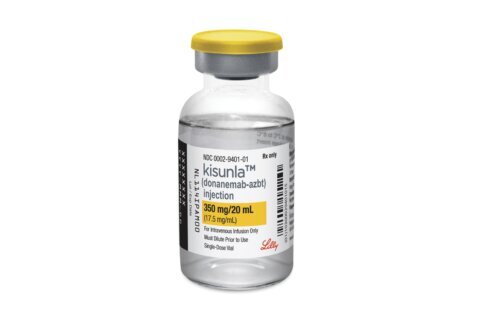Pickleball, which has been the fastest-growing sport in America in recent years, is a hybrid of badminton, tennis and table tennis. According to the Sports and Fitness Industry Association, pickleball participation increased by 159% over the past three years. There are a number of reasons why pickleball is so popular. If you have a pickleball court near you, all you’ll need are pickleball paddles, balls and a couple of people to play with. Plus, it’s a fun, active game that can make getting your daily activity in feel like a breeze.
In 2018, just before the sport’s popularity exploded, the American Council on Exercise sponsored research that explored whether pickleball can help middle-aged and older adults get fit.
[READ 6 Expert-Approved Tips to Make Exercise a Habit]
Is Pickleball Good Exercise?
The Centers for Disease Control and Prevention recommends 150 minutes of moderate-intensity physical activity and two days of muscle-strengthening activity per week. Playing pickleball can help you reach those physical activity guidelines.
Research shows that the average caloric expenditure for the pickleball participants is approximately 350 calories burned for every 60 minutes of participation. Based on these results, it’s clear that regular participation in pickleball elicits cardiovascular and metabolic responses that meet exercise intensity guidelines for improving and maintaining cardiorespiratory fitness. This means pickleball can be an ideal form of physical activity for many adults.
Mental Health Benefits of Pickleball
The physical benefits of pickleball aren’t the only advantage of the up-and-coming sport Research into the mental health benefits of pickleball found that pickleball players saw improvements in the several measures of mental health, including personal well-being, life satisfaction, depression, stress and happiness. Importantly, there is a sense of fun and camaraderie on the court, even if the competition level can sometimes be fierce.
The importance of having fun while moving cannot be overstated, as enjoyment is one of the primary predictors of adherence to an exercise or physical-activity program. Additionally, exercising with others can help you stay on track with your fitness goals.
[See: Mind-Blowing Benefits of Exercise.]
Pickleball Injuries
One of the concerns about the rapid growth of a sport that sees its greatest popularity among people aged 55 and older is the risk for falls and injury. In fact, estimates of the medical cost of pickleball injuries for Americans range between $250 and $500 million dollars each year, and that number is likely to grow as the sport’s popularity continues to skyrocket. The most commonly injured parts of the body are the wrist, lower leg, head and lower trunk.
Newcomers to the sport or those who have only watched it on TV often find that pickleball is more demanding than it appears at first glance. Safe participation requires high levels of hand-eye coordination, as well as the ability to make quick starts and stops when changing directions during a point. Proper technique, like turning and running for the ball rather than backpedaling, coupled with an exercise regimen that prepares the body for the sport, will allow for safe participation in this fun and exciting game.
[READ: Best Exercises for Preventing Falls in Older Adults.]
Pickleball Exercises for Injury Prevention
This exercise program can be completed two to three days per week (on nonconsecutive days) to prepare the body for the demands of pickleball. This workout combines a variety of movements that support postural stability, joint mobility and proper movement patterns. The complete program includes:
— Pickleball warm-up.
— Pickleball conditioning.
— Pickleball cool-down.
The warm-up can be performed on its own prior to playing pickleball, in addition to serving as the warm-up for the conditioning segment of the workout provided.
For both the warm-up and cool-down, perform the movements at a low-to-moderate intensity.
Pickleball warm-up
— Standing gate openers, 8 to 15 on each leg.
— Inverted flyers, 8 to 15 on each leg.
— Lateral over unders, 8 to 15 in each direction.
— Mountain climbers, as many as possible in 30 seconds.
Pickleball conditioning
For the conditioning segment, perform one set of each exercise listed and then start back at the top of the list and perform the second set of each exercise. At first, performing only one set of each exercise may be most appropriate. Work your way up to completing four sets of each exercise. Rest for 30 seconds or less between exercises.
— Side lunge, 8 to 15 each leg.
— Push-up with single-leg raise, 8 to 15 total.
— Sumo rotational squats, 8 to 15 rotations in each direction.
— Side-lying arm rolls, 8 to 15 each side.
— Sprinter pulls, 8 to 15 each leg.
— Bird dog, 8 to 15 each side.
— Supine bicycle crunches, 8 to 15 each side.
Pickleball cool-down
— Standing triangle straddle bends, 1 to 2 for a total of 60 seconds, stretching to the point of feeling tightness.
— Kneeling hip flexor stretch, 1 to 2 for a total of 60 seconds, stretching to the point of feeling tightness.
— Cat-cow, 8 to 15 repetitions.
— Shoulder stability-mobility series, 8 to 15 of each formation.
— Spinal twist with a push-pull movement, 8 to 15 on each side.
More from U.S. News
A Guide to Exercise After Surgery
11 Signs You Should Stop Exercising Immediately
5 Tips for Warming Up Before a Workout
How to Prevent Pickleball Injuries originally appeared on usnews.com







